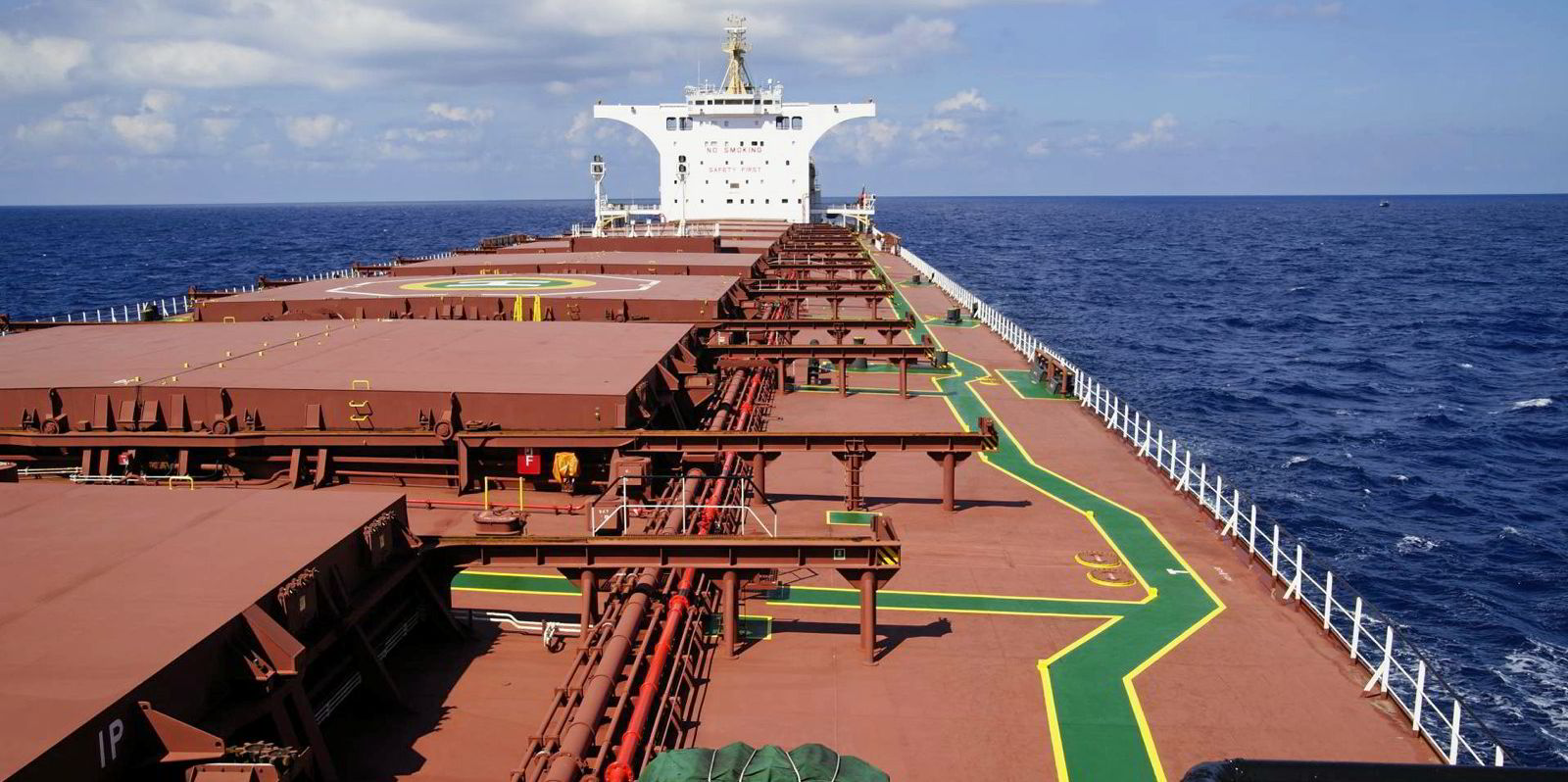The market for capesize bulkers could face headwinds this year as the weather phenomenon El Nino transitions into La Nina, according to the global head of research at shipbroker SSY.
The weather patterns refer to the two extremes in variation in Pacific Ocean sea-surface temperatures, known as the El Nino-Southern Oscillation (ENSO).
El Nino is broadly bullish for seaborne dry bulk commodity demand, while La Nina is generally bearish — which means bulker markets could be in for a turnaround later this year, according to Dr Roar Adland.
“Since last summer and until now we have been firmly in the El Nino phase,” he said in a research report provided to TradeWinds.
“Unfortunately for dry bulk bulls, this is now changing, with the climate experts predicting neutral conditions from May and then a rapid switch to La Nina from the third quarter onwards — just in time to put a dent in West African exports during the peak of their rainy season in August.”
There is more than an 80% chance that La Nina weather system will come into effect from September, which could be bearish for the capesize market in late 2024 and early 2025, Adland added — that is, if weather experts get it right.
“It sounds obscure, but it is arguably one of the biggest indirect drivers of anything from commodity exports from key regions to logistical bottlenecks in South America and Panama Canal transit restrictions,” he said of ENSO.
El Nino led to higher exports of iron ore from Brazil in late 2023 and early this year, which Adland said was a principal driving force behind the strength of the capesize market this year.
El Nino tends to bring drier conditions during the rainy seasons in key exporting regions such as Brazil, Australia, Indonesia and West Africa, which means production can remain high.
But these drier conditions can also cause droughts that correlate to low water levels and inefficient barging operations in key rivers in northern Brazil and the Gatun Lake that feeds the Panama Canal, according to Adland.
“Thirdly, it tends to lead to higher global temperatures and a weaker Asian monsoon season, contributing to higher energy demand for cooling and coal burn,” he said.
La Nina has the opposite effects and is therefore bearish for dry cargo shipping.
“All told, the long-term weather forecast does not look all too promising,” Adland said.
Equatorial sea-surface temperatures have been above average across the central and east-central Pacific Ocean over the past four weeks, the US National Oceanic & Atmospheric Administration (NOAA) said in a report on Monday.
This means El Nino has an 83% chance of transitioning to a neutral state by the end of June.
There is a 62% change that La Nina conditions will develop between June and August, according to NOAA, which monitors the weather systems.
The probability of a fully fledged La Nina event will increase further during the final quarter of 2024, it said.
La Nina was the dominant weather system during late 2020 through to the end of 2022. El Nino took over in April last year, according to NOAA data.
The bullish effects of El Nino on the capesize market was something that Adland predicted in June last year, while speaking at NorShipping in Oslo.
He also predicted that logistical constraints could crop up at chokepoints around the world, such as in the rivers of South America and the Panama Canal.






